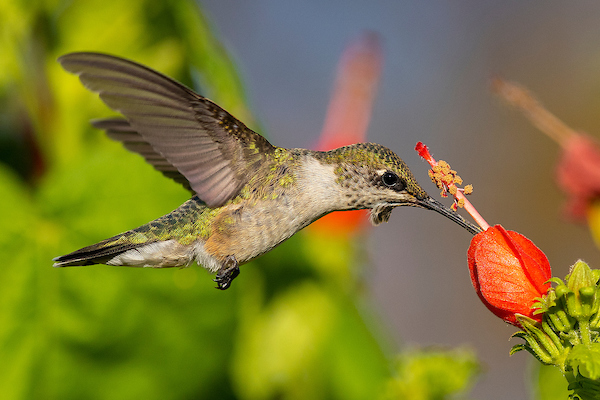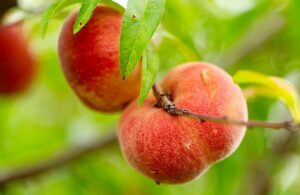- La Feria Community Holds Succesful Business Mixer Event
- Little Nashville to Take Place in Downtown Mercedes
- Lions Basketball Captures District Gold
- La Feria ISD Students Compete in Regional Chess Tournament
- Lions End First Half of 32-4A on a High Note
- La Feria ISD Held Another Successful Parent Conference
- Strong Appearance for Lions at Hidalgo Power Meet
- LFECHS Students Get to Meet Local Actress
- Students Participate in Marine Biology Camp
- Two LFECHS Students Qualify for All-State Band
How To Feed A Hummingbird
- Updated: August 16, 2024
From feeders to flowers, hummingbird basics for Texans

By Susan Himes
Few people can watch a hummingbird without smiling. From flight to feeding, nature has designed hummingbirds to delight and captivate us. It’s no surprise that hummingbird feeders can be found in yards and gardens from Texarkana to El Paso.
Experts from the Texas A&M AgriLife Extension Service and The Gardens at Texas A&M University shared what people should know about feeding hummingbirds and the migration of these fascinating flying machines.
“Hummingbirds can buzz around as fast as 40 mph from flower to flower and have the highest energy output per unit of body weight of any animal in the world,” said Mike Arnold, Ph.D., professor and director of The Gardens at Texas A&M University, Bryan-College Station.
“They are the smallest birds but need an incredible amount of energy, which means an incredible amount of nectar — or nectar substitute — to keep up with their caloric demands.”
Hummingbird feeders
There are more than 300 species of hummingbirds worldwide, but only around 18 are found regularly in the U.S., and nine are common to Texas. Most Texans will start to see the birds around March.
Hummingbird feeders can be kept out year-round in Texas if cared for correctly and in appropriate regions, said Emily Grant, AgriLife Extension Birding with Extension program coordinator. Feeders should be put out ideally two weeks before hummingbirds are expected to arrive. During migration extra nutrients are needed, so spring and summer are crucial months for birds.
Grant said cleaning hummingbird feeders and putting in fresh food every two to four days is crucial. Black mold can grow and multiply quickly — even unseen to the human eye. If birds drink from a moldy feeder it can make it impossible to eat if their tongue and throat swell up, and the hummingbird will die. Feeders in direct sun and in more humid climates will need to be cleaned more often.
“Only put out the amount hummingbirds will drink in a few days,” Grant said. “There is no point in wasting food, and you’ll soon gauge if the amount you put out is too much. However, keep an eye out if you start seeing more visitors than usual to ensure it doesn’t run out before you clean and fill it again.”
Hummingbirds can become territorial with feeders as well, so you may want to set up another in a different part of your yard if you see one aggressively driving others away from “their feeder.”
Hummingbird feeder recipe
Homemade nectar can be made from four parts boiled water to one part white, granulated table sugar. Once the mixture cools, it can be poured into the feeder. If you want to make larger batches, they will keep for one to two weeks in a refrigerator.
Although hummingbirds are attracted to red and other bright hues, do not add color to your store-bought or homemade nectar. Using a feeder with red on it is better and safer than using dye and additives. You can also paint the feeder pole or hanger to make it even more eye-catching to the birds.
Arnold added that nectar isn’t a substitute for water for hummingbirds and that fresh water in a shallow container or a bubbling bird bath are ideal ways to let them drink and bathe.
Feeding with flowers
When planting flowers to attract hummingbirds, Arnold suggested keeping the shape of blooms and how these birds feed in mind. Hummingbirds’ long, specialized beaks allow them to feed from tube-shaped flowers.
Firebush, sometimes called hummingbird bush, does especially well in the heat and is a designated Texas Superstar. Other hummingbird favorites include Turk’s cap, Lantana, petunia and Pride of Barbados.
“Plants that attract pollinators are usually attractive to hummingbirds as long as the shape is conducive to feeding,” Arnold said.
Arnold stressed that it’s important to have flowers blooming when the hummingbirds need them, so plant with a plan — blooms should overlap from March through fall, ideally. If all bloom at once, your hummingbirds won’t be able to hang around once their food source dries up.
Arnold said hummingbird feeders are hung as needed at The Gardens, but only when there aren’t enough flowers in bloom to provide the birds with nectar.
Migration
Some hummingbirds are indeed fair-weather friends and will migrate south to spend the fall and winter months in a warmer climate.
“Simply put, some hummingbirds migrate, and some don’t,” Arnold said. “Depending on the part of the state you live in, you can have birds year-round.”
Grant suggested Texans check eBird.org to keep track of their typical migratory patterns and sightings and to learn more about what hummingbirds are in their region and when.
“If you are going to feed year-round, it is a responsibility you must take seriously, as the birds will depend on that nectar to survive,” Grant said. “Remove the feeder at the end of summer as migration concludes if you aren’t prepared for that kind of commitment.”
The Birding with Texas A&M AgriLife Extension program offers in-person workshops, online events and regular Wednesday morning chats on their Facebook page for people looking to become more involved in birding.




